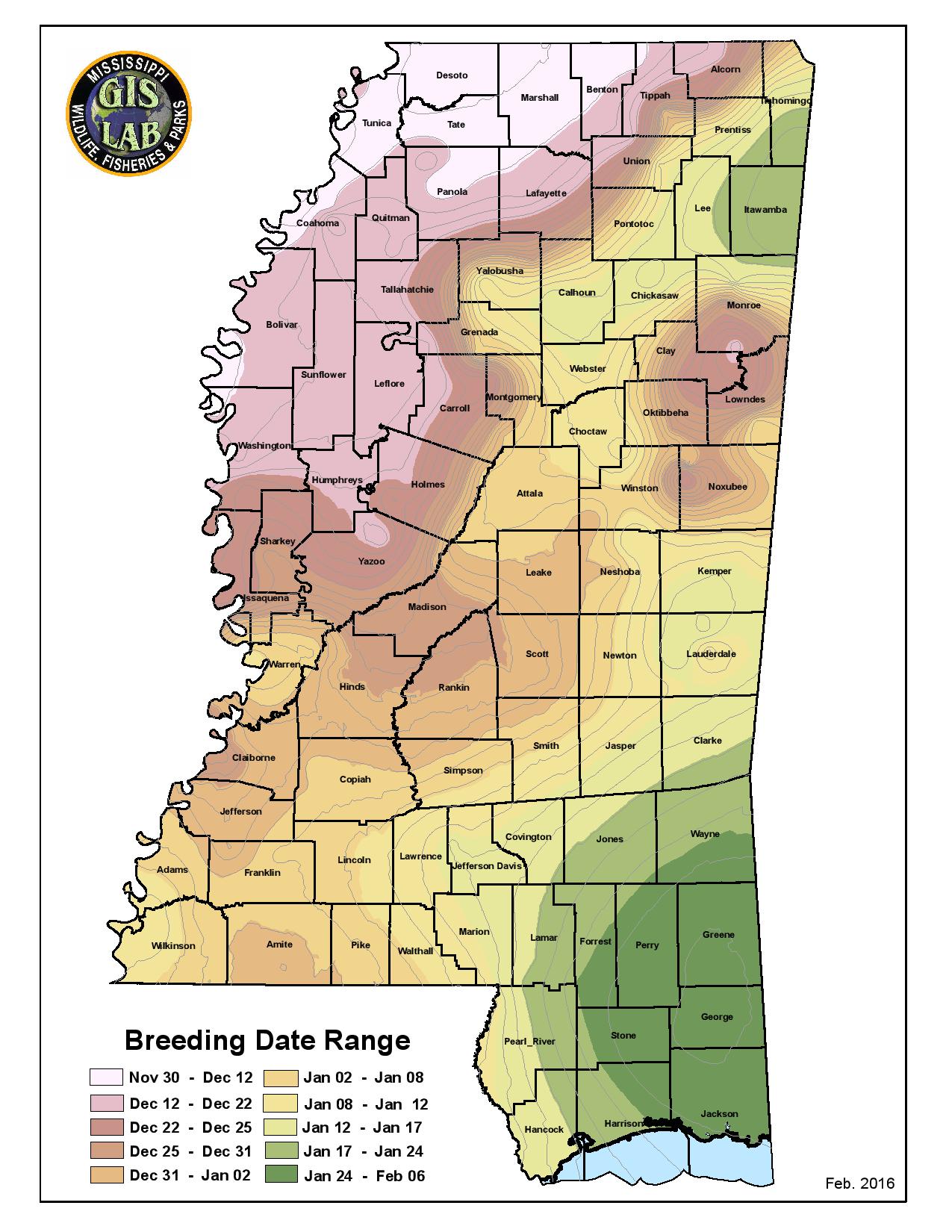
Written by: Kevin Owens
Edits by: Pierce Young
The whitetail deer rut is one of the most fascinating periods in a deer’s annual cycle, drawing hunters into the woods for a chance at a buck. Understanding what triggers the rut—and how it unfolds—can provide crucial insights into deer behavior and improve hunting success.
What Starts the Rut?
The primary trigger for the whitetail rut is photoperiod—the shortening of daylight in the fall. As days grow shorter, a deer’s internal hormonal system responds, increasing testosterone in bucks and preparing does for estrus. This hormonal shift sparks breeding behaviors, including increased movement, sparring, and courtship activity.
While weather conditions can influence when deer are most active, they do not cause the rut. Warm or cold weather, new moons, or full moons do not change the underlying drive to breed that is controlled by photoperiod.
Mississippi’s Rut Timing
In Mississippi, rut timing varies across regions. Photoperiod remains the main driver, but genetics and historical deer restocking from different areas have created a wide range of rut periods across the state. As a result, hunters in north, central, and south Mississippi may observe peak activity at different times of the year.
Importantly, Mississippi has over 40 years of breeding-date data, showing that the peak conception date—the true peak of the rut—does not change for a given area. While environmental factors or deer management practices may alter deer movement or activity levels, they do not shift the timing of the peak rut.
Rut Phases
The rut can be broken down into three general phases, each with distinct behaviors and timings. Population dynamics, like skewed Buck: Doe ratios or high deer densities, can spread out the length of the peak rut and cause a more pronounced secondary rut (28 days after peak), but the actual peak date remains unchanged.
1. Pre-Rut
During the pre-rut, bucks’ hormone levels rise, triggering behaviors such as:
- Making rubs on trees and scrapes on the ground
- Sparring with other bucks
- Increased movement as they begin seeking does (many hunters may feel this is the main rut)
Most does are not yet in estrus, but bucks are actively searching. Movement and activity levels are especially noticeable in mature bucks.
Regional Timing:
- Northwest Mississippi: Late October – Late November
- Central Mississippi: Mid November – Mid December
- Southeast Mississippi: Early December – Early January
2. Peak Rut
The peak rut occurs over a 1–2 week timeframe when most does (over 50%) enter estrus for 24–36 hour cycles, and bucks engage in intense breeding activity. This phase is marked by:
- Bucks breeding does almost constantly
- Drops in deer movement as bucks have no problem finding hot does
- Weight loss in bucks due to exertion
Regional Timing:
- Northwest Mississippi: Early – Mid December
- Central Mississippi: Mid December – Early January
- Southeast Mississippi: Early January – Early February
3. Post-Rut
As the breeding season winds down, bucks begin to recover, feeding heavily to regain lost weight. Some secondary rutting may occur if unbred or young does come into estrus. Antlers begin shedding by February, signaling the end of the breeding cycle.
Regional Timing:
- Northwest Mississippi: Late December – Early January
- Central Mississippi: Early – Late January
- Southeast Mississippi: Late January – Mid February
Understanding the triggers and phases of the whitetail rut is essential for anyone looking to increase their odds of harvesting a buck. While weather and population dynamics may affect short-term activity or spread out the visible rut, the photoperiod and internal hormonal cues remain the true drivers of breeding, and decades of Mississippi data confirm that peak conception dates do not shift. By paying attention to regional timing and rut phases, hunters and wildlife enthusiasts can better anticipate deer movements and behaviors.
For more information about wildlife management visit
www.mdwfp.com/wildlife-management-info
